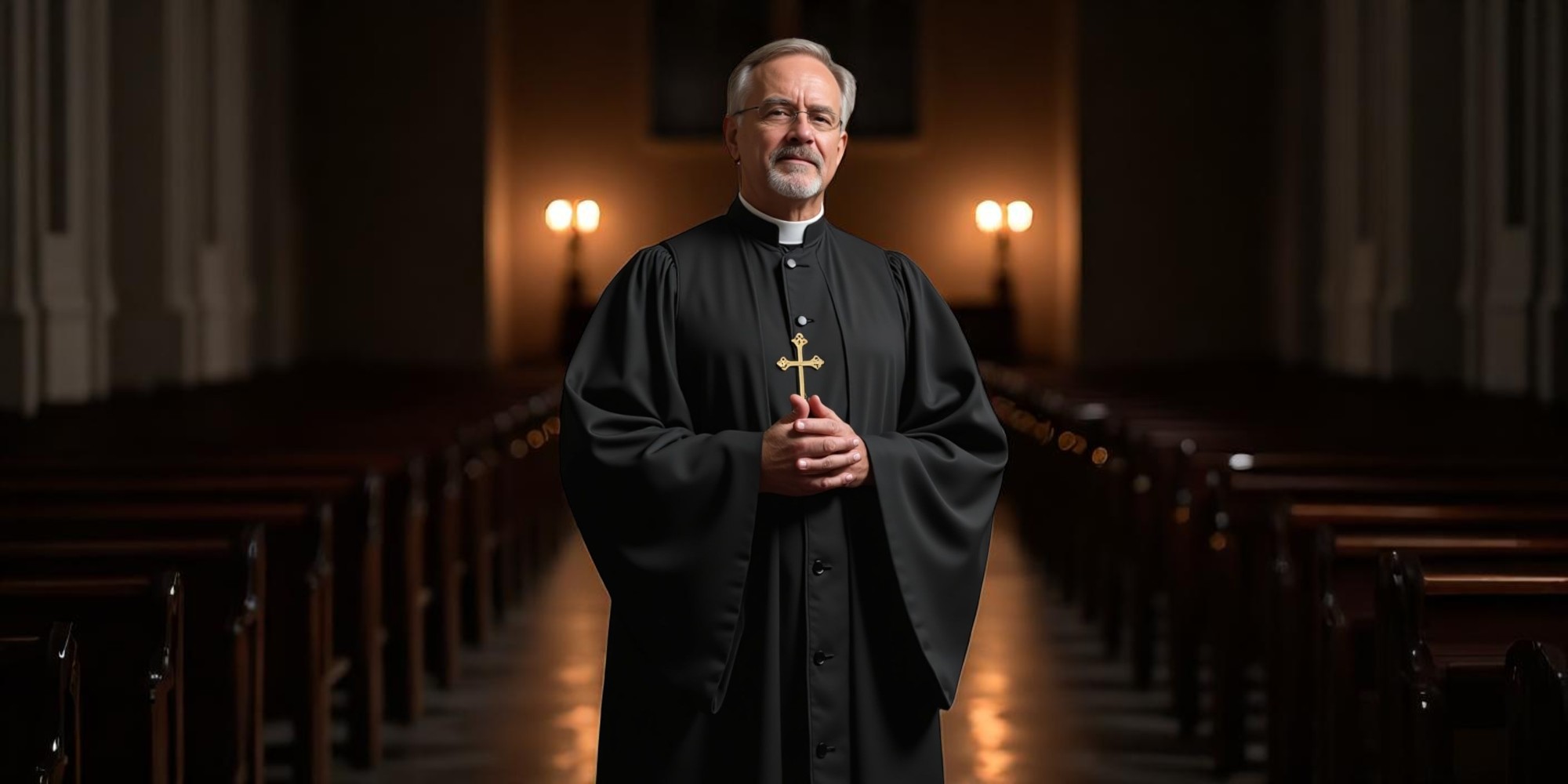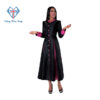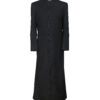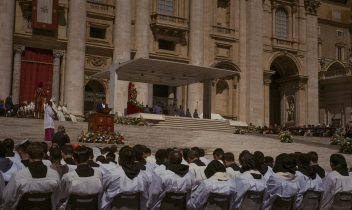No products in the cart.
Return To Shop
The Ultimate Guide to the Clergy Robe History, Styles, and Modern Practice
When you walk into a church, cathedral, or chapel, one of the first things that declares “this is sacred space” is the distinctive clothing worn by its ministers. That garment is most commonly called the Clergy Robe a catch-all term for the vestments that set clergy apart for worship and pastoral ministry. In this in-depth guide we will explore the origins, variations, symbolism, and everyday realities of Clergy Robes, Priest Robes, Pastor Robes, Preacher Robes, Minister Robes, and the special garments worn by bishops. Whether you are a seminarian preparing for ordination, a worship leader writing website copy, or simply a curious congregant, this 1,500-word overview will give you the complete picture.
A Brief History of Clerical Attire
The Clergy Robe did not appear out of thin air; it developed from the everyday dress of Late-Antique Rome. As secular fashions shifted during the early Middle Ages, the Church retained older silhouettes to signal continuity and stability. Over time, particular garments received theological meaning. The cassock began as an under-robe and evolved into the clerical “uniform” in many traditions. The alb, a long white tunic, came to symbolize baptismal purity. The chasuble, once an outdoor cloak, is now a key Eucharistic vestment symbolizing charity. These historic garments laid the foundation for today’s Priest Robes, Pastor Robes, and Bishop Robes.
Why Robes Matter its Theology, Identity and Function
Clergy Robes are not merely decorative. They carry deep theological significance, express ministerial identity, and offer functional benefits. Theologically, robes signal that worship is set apart from daily life, echoing the garments of ancient Israel’s priests. In terms of identity, robes distinguish the role of the minister rather than the personality of the individual. Practically speaking, robes provide comfort during long services, accommodate movement for rituals, and offer warmth in colder sanctuaries. Thus, the Clerical Robe serves both symbolic and utilitarian purposes.
The Core Types of Clergy Robes
The Cassock
The cassock is a fitted, ankle-length garment with a stand-up collar and a row of buttons down the front. It is traditionally worn by Roman Catholic priests, Anglican clergy, and some Lutheran and Orthodox ministers. Cassocks are usually black, though bishops wear purple and cardinals wear red. In tropical climates, a white cassock may be worn. The cassock functions as a daily clerical robe and can also be layered with other vestments during services.
The Alb
The alb is a simple, long white robe made of linen or a linen blend. It symbolizes purity and the baptismal garment, making it one of the most widely used vestments in Christian worship. It is commonly worn by clergy across Roman Catholic, Anglican, Lutheran, and Methodist traditions. The alb is often cinched at the waist with a belt or cincture and serves as a liturgical base layer beneath other vestments.
The Surplice
The surplice is a wide-sleeved, typically knee-length white robe worn over the cassock. It is often used during non-Eucharistic services such as Evensong or Morning Prayer and is associated with choir and lay readers as well as clergy. The surplice adds a ceremonial dimension to services without the need for more elaborate vestments.
The Geneva or Preaching Gown
The Geneva gown is a black robe with wide, double-bell sleeves. It is traditionally worn by Protestant ministers, particularly in Reformed, Presbyterian, Methodist, and Baptist traditions. Its scholarly look reflects the importance of preaching and teaching, making it an ideal choice for non-Eucharistic worship. Hence, it is often called the Preacher Robe or Minister Robe.
The Chimere and Rochet
The rochet is a white, alb-like garment with close-fitting sleeves, often worn by bishops. Over it, bishops wear a chimere, a sleeveless outer robe usually in red or purple. This combination is reserved for formal occasions and signals the bishop’s authority and teaching role within the church. These garments are central to the visual identity of Bishop Robes.
Eucharistic Vestments
The chasuble is a poncho-like robe worn over the alb during the celebration of the Eucharist. It is often ornately decorated and color-coordinated with the liturgical calendar. The cope is a semi-circular cape used in processions or non-Eucharistic rites. Other vestments such as the dalmatic (for deacons) and tunicle (for sub-deacons) appear in more traditional liturgical settings. Together, these vestments form the complete wardrobe of Clergy Robes.
Color, Trim, and Accessories
Liturgical colors communicate the seasons and themes of the Church year. White is worn during Christmas, Easter, weddings, and funerals and often features gold trim. Green is the color of Ordinary Time and is typically trimmed in simple designs. Purple or violet is used during Advent and Lent, sometimes accented with black piping. Red marks Pentecost, ordinations, and feast days of martyrs. Rose is worn on Gaudete and Laetare Sundays. Accessories such as stoles, cinctures, and pectoral crosses provide further insight into rank and liturgical function. Bishops may also wear a purple skullcap or a fascia, completing the dignified look of Bishop Robes.
Choosing a Robe – Fit, Fabric and Budget
Choosing the right Clergy Robe depends on several factors. First, clergy should consult their denominational guidelines to ensure compliance with tradition. Second, climate matters: lightweight microfibre suits tropical regions, while wool works well in colder environments. Fit is essential a tailored robe enhances comfort and dignity, but ready-to-wear options are available for those on a budget. Breathability and ease of movement are also key, with features like pleated backs and hidden pockets offering practical benefits. For clergy anticipating promotion, modular designs allow adjustments without purchasing an entirely new set.
Caring for Clergy Robes
Proper care extends the life of Clerical Robes and preserves their symbolic value. Robes should be stored in a vestry or wardrobe using wide, padded hangers to maintain shape. Most polyester or blended robes can be machine-washed on a gentle cycle, while delicate fabrics like lace or brocade may require hand washing or dry cleaning. Steam ironing with a pressing cloth helps prevent damage. When traveling, clergy should use garment bags to protect vestments and avoid creasing.
Modern Trends Sustainability and Inclusive Sizing
As the global church evolves, so does its approach to Clergy Robes. Eco-conscious options made from recycled polyester, Tencel, or organic bamboo are gaining popularity. Manufacturers now offer robes in extended and inclusive sizing, ensuring a proper fit for clergy of all body types. Gender-specific tailoring is increasingly common, accommodating female clergy with darted cassocks or adjustable albs. Digital tools, such as 3D fitting apps, allow for custom robes without in-person fittings, making it easier than ever to order high-quality vestments.
Frequently Asked Questions
What are clergy robes called?
Clergy robes are generally known as Clergy Robes or Clerical Robes. Specific garments have their own names, such as cassock, alb, surplice, chasuble, and Geneva gown.
What type of robe is worn by the clergy?
Clergy wear different robes based on denomination and occasion. A Roman Catholic priest might wear a cassock and alb with a chasuble, while a Protestant minister might don a Geneva gown. All fall under the broader term Clergy Robe.
Where are clergy robes kept?
Clergy robes are usually stored in a vestry or sacristy, which is a room near the sanctuary equipped with wardrobes or garment racks to keep vestments in good condition.
What clothes are worn by clergy?
Outside of services, clergy often wear clerical shirts with Roman collars. During services, they add robes like cassocks, albs, and chasubles, depending on the liturgy.
Can a priest marry?
In the Roman Catholic Latin Rite, priests are typically celibate. However, Eastern Catholic and many Protestant traditions allow clergy to marry, including those who wear Pastor Robes and Minister Robes.
How did clergy dress?
Clergy historically dressed in the common attire of their era, which gradually became more standardized and symbolic. Over time, garments like the alb, chasuble, and Geneva gown developed theological and liturgical significance.
Final Thoughts
From the simple alb to the ornate chasuble, the Clergy Robe weaves together theology, history, and functionality. Each garment tells a story of faith and purpose, elevating both the minister and the moment. Whether you are preparing for ministry or simply deepening your understanding, the study of Clergy Robes opens a window into the sacred rhythms of worship and tradition.













Add comment
You must be logged in to post a comment.